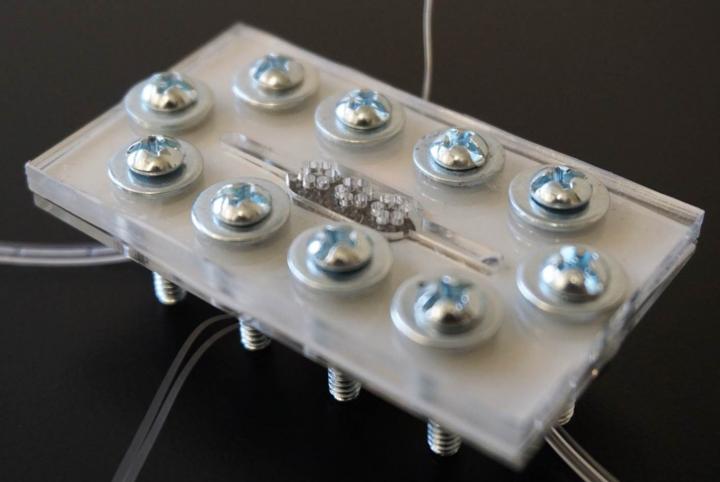
The cells were developed by a team at Binghampton University, part of the State University of New York, and is intended specifically for powering lab-on-a-chip diagnostic devices, said research leader Seokheun Choi.
Such devices need a self-contained clean power source, and miniaturised biological solar cells (micro-BSCs) - where photosynthetic microorganisms are the key to electricity generation - are an attractive option because the microorganisms are self-assembling and self-maintaining.
However, Choi explains in a paper in the journal Lab on a Chip, their potential has not yet been realised because the only micro-BSCs that have been made so far have only produced power density outputs in the range of nW per cm2 — not enough for microfluidic devices — and have only lasted for a couple of hours.
Choi’s team has used a new architecture for their solar cells and has produced a system which, they claim, exhibited a greater power density than any micro-BSC system to date: a maximum output of 43.8µW per cm2, and even more significant, produced sustained power of around 18.6µW per cm2 during the day and around 11.3µW per cm2 at night for 20 days.
The device consisted of a film of a cyanobacterium — a type of simple single-celled plant that has existed on Earth for over 2.5 billion years — called Synechocystis. Living in fresh water, Synechocystis can generate energy during the day (via photosynthesis) and at night (by degradation of stored glucose by enzymes). Cyanobacteria tend to grow in biofilms, spontaneously organising themselves into colonies; such biofilms can be a nuisance in some situations.
Choi’s team grew the film on a carbon fibre cloth that had been coated with a conductive polymer, poly (3,4-ethylenedioxythiophene) polystyrene sulphonate, which acted as the anode in the solar cell. Completing the cell by adding a proton exchange membrane and air cathode and enclosing the whole thing in a thin gas-permeable and transparent silicone membrane, Choi and his PhD student, Lin Liu, constructed a cell with a volume of just 90µL that kept the cells alive and produced its record-breaking power density and longevity without the need for any additional fuel.
"The device will release biological photo-energy conversion technology from its restriction to conceptual research and advance its translational potential toward practical and sustainable power applications for point-of-care diagnostics to work independently and self-sustainably in limited-resource and remote regions," Choi claimed.





Project to investigate hybrid approach to titanium manufacturing
What is this a hybrid of? Superplastic forming tends to be performed slowly as otherwise the behaviour is the hot creep that typifies hot...